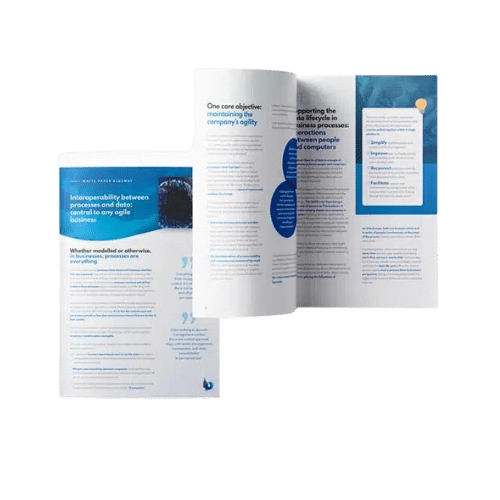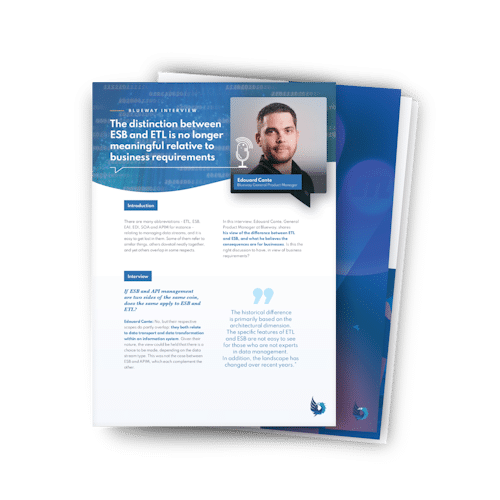A great many companies, whatever their sector of economic activity (manufacturing, services, retail, engineering, etc.), have an IT architecture that is based on SAP with a galaxy of other applications orbiting around it. This disparate collection of solutions also needs to interact with the business’ broader ecosystem: partners, suppliers, subcontractors, customers, etc.
While SAP spans a vast functional scope, it is well known that it is also something of a monster of an application, complex and even cumbersome to use, with drawbacks including:
- A substantial cost per licence while most users use only a limited part of the functionalities it offers.
- Being complicated to grasp, especially for occasional users who simply need to retrieve information or enter an order.
- Inflexible implementation and complex upgrade procedures. It is down to users to adapt to the software, not the other way around, which also causes daily difficulties.
Simple administration jobs are often complicated and all the users at our SAP-running customers agree that they would like to see more agility… But how can this be achieved in practice?
Take a step back to review ERP’s role in the organisation of data streams
Feedback from users suggests that while the SAP environment is viewed as reliable and robust, it is also perceived in a less positive light in terms of user unfriendliness, being difficult to grasp, cumbersome, etc. Behind these quality shortcomings, it is beyond dispute that centring data interchange around SAP with point-to-point data interfaces creates an IT straightjacket in which it is difficult to move, and which is therefore harmful to business agility:
- A change to any one of the applications in the structure affects the whole data chain.
- Without a full overview of the business process, it is sometimes only realised that elements are missing and the risk of error is greater at the end of the cycle.
- When an SAP upgrade is applied, the entire information system and data streams between applications are in jeopardy. Interfaces often have to be rebuilt, and data streams between SAP and other applications redesigned.
- Rethinking these cross-functional processes to optimise them requires changes to multiple interfaces, and this is often an area of improvement that is kicked into the long grass…
Such challenges are not related to the extensive functionality of SAP itself, which brings real added value to user businesses that can no longer do without it. It is the positioning of SAP in data governance and streams that is the real cause. Just as users should concentrate on their business line, thanks to automation of data flows, SAP should concentrate on what it is best at, which does not include structuring and managing data flows between applications!

How process (BPM) and data (ESB) integration can create value for IT and business departments ?
The method: rationalising data streams around SAP to make the IS more agile
Data interchanges conveyed to and from SAP are many and varied, with orders, warehouse management systems, billing data, payroll information, bank files, price comparisons, etc. The information system’s agility is based on re-engineering data transfers to rationalise them and make them more readily upgradeable and flexible.
To cope with complex IT environments, data handling must be made easier, irrespective of the application or data stream concerned. If this is to be achieved, cross-functional, agile business processes cannot be dependent on one application or data format. Independence is the only way to reduce the burden of IS development.
The overall architecture must consequently further an independent, cross-functional view of applications. Business processes determine the structure of data interchanges. The architecture should make it possible to manage, organise and supervise all interchanges between applications, in particular to and from SAP.
The architecture also has to transform and transport data in a neutral format to enable it to be used as input elsewhere, regardless of the target application, whether SAP or any other solution in the internal IS or the wider IT ecosystem. It is also the best way to enable interaction with the information systems run by partners, customers, suppliers, etc. by eliminating the format issue and gaining more operational agility.

ESB vs ETL ? The distinction between is no longer relevant relative to today’s business requirements.
Moving towards an agile SAP environment: the practical solution and benefits
A real toolkit is needed, and it takes the form of an integration platform combining business process management (BPM), an application bus (ESB) and an open door to data harmonisation (MDM). This platform will serve to control, optimise, consolidate and coordinate all data streams in their entirety. Unlike the SAP environment, the data integration platform can sit outside the various applications comprising the IS.
This approach consequently offers reversion options for each application, and importantly delivers more agility across the information system as regards:
- Easier integration of new applications into the IS;
- Replacing functional components with no impact on business processes;
- Optimising cross-functional processes bringing a number of applications into play;
- Securing and automating data interchanges;
- Installing a control tower providing a consolidated picture of all interchanges and reporting warnings;
- Restricting spending on SAP licences to the number strictly required to meet functional needs.
This regained agility is quickly felt around the business. Managers no longer have to wonder how they are going to get this application or that technology to interact with this other one, business departments can independently manage their own data interchanges, and so on. Under this approach, it is quite simply the business issues that determine how cross-functional processes run, and not IT or connectivity constraints. Ultimately, this agility and reliability in data interchange is of direct benefit to the operational efficiency of the business.
Naturally businesses, in particular smaller businesses, generally prefer to optimise their information systems continuously, operating with surgical precision on specific areas so as not to jeopardise all of their data traffic at once. However, migrating SAP versions, reviewing significant software components, or integrating a new business line are all great opportunities to re-examine your processes and consider re-engineering your information system.An opportunity too good to miss if you find yourself in this situation.
To take advantage of the practical experience of companies who have got their agility back, read our customer testimonials or have a chat with our experts.

Want to discuss interoperability challenges with an expert?





